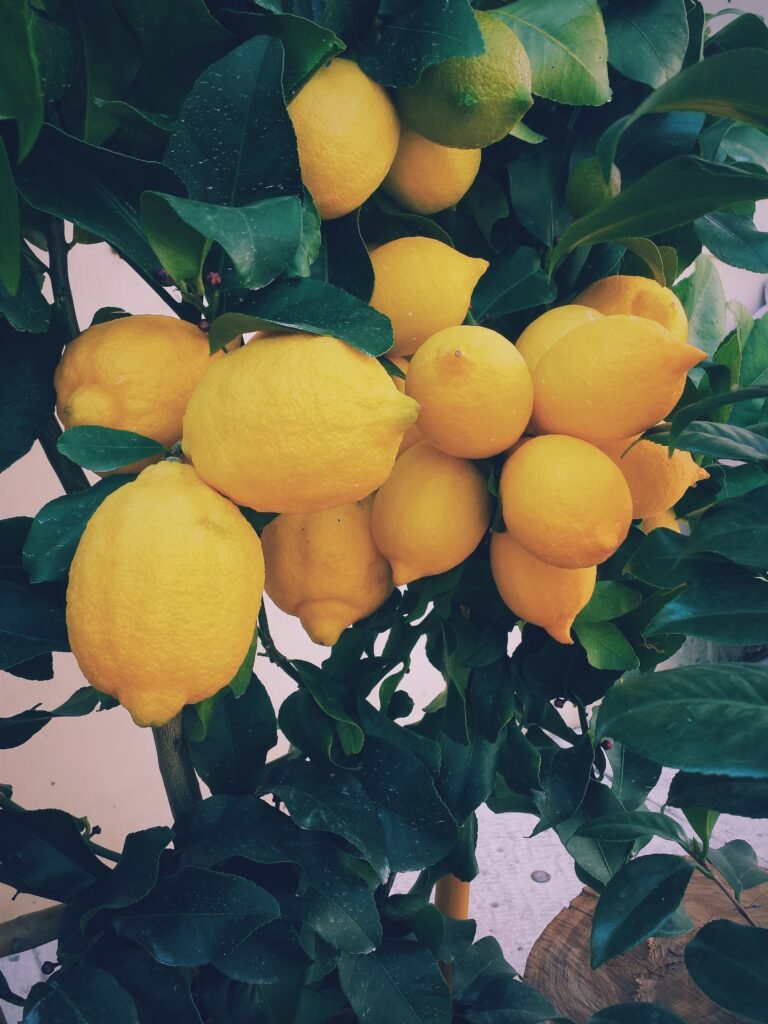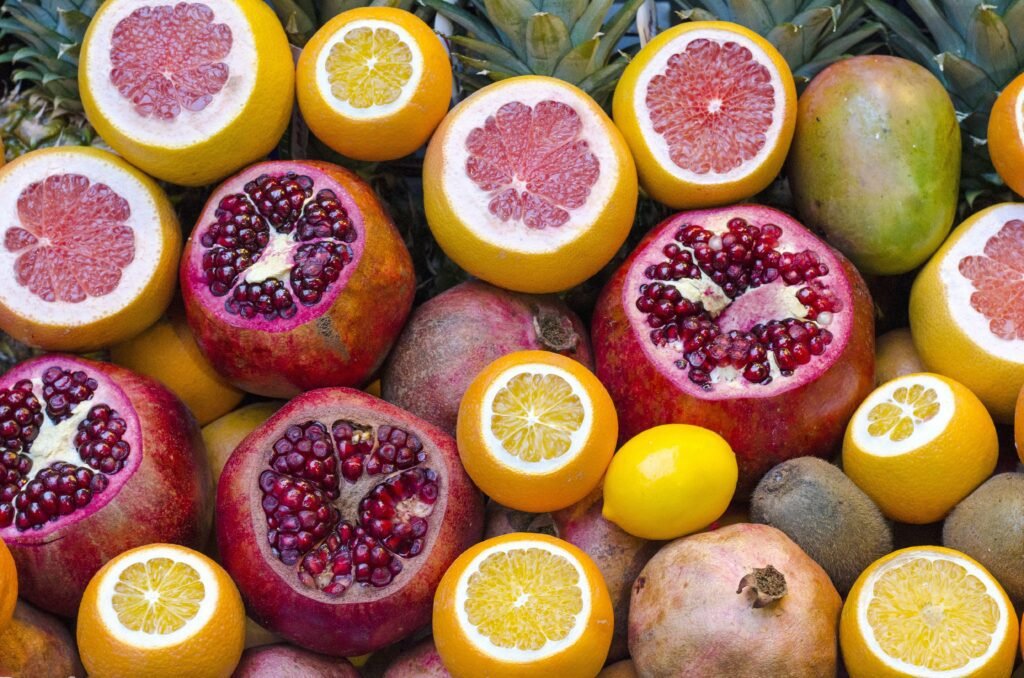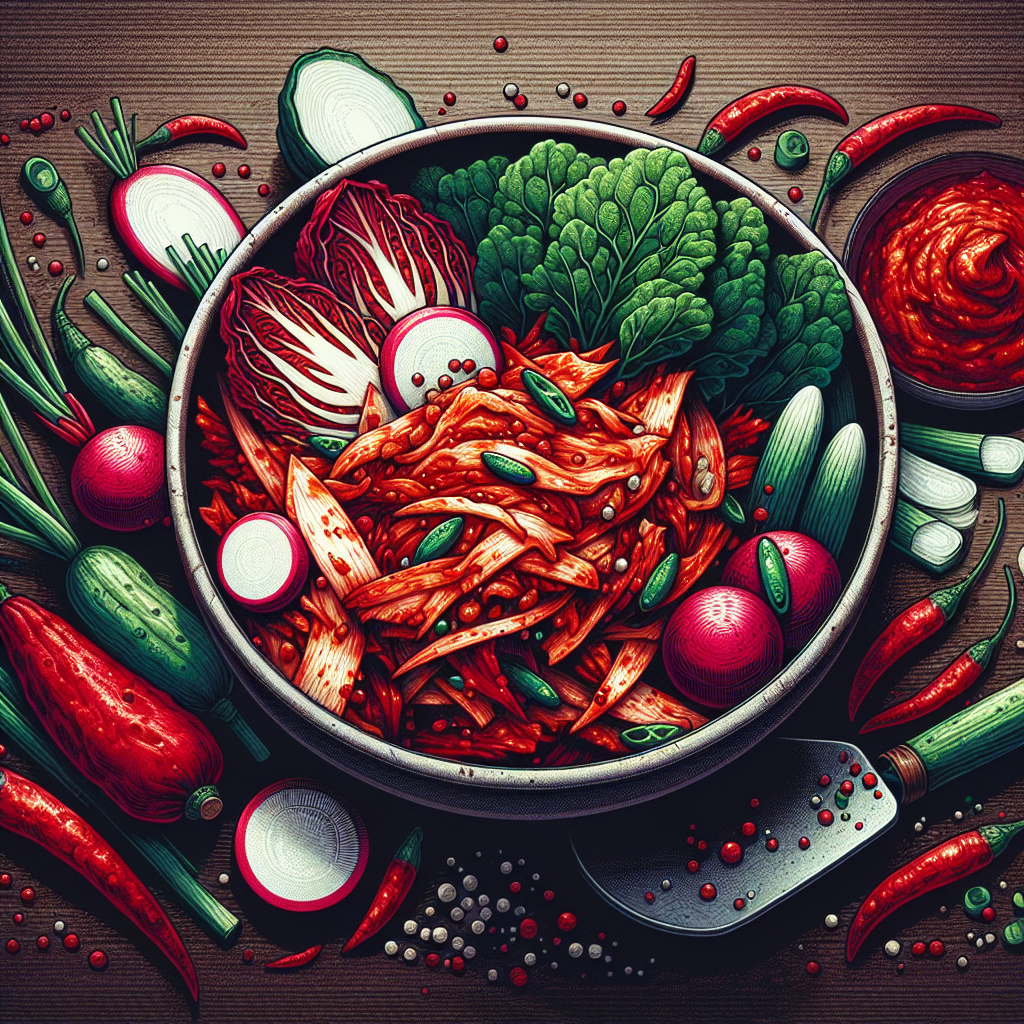Imagine yourself in the bustling streets of Seoul, surrounded by the vibrant sights and smells of Korean cuisine. As you stroll through the alleys, you can’t help but be drawn to the tantalizing aroma of kimchi, a traditional staple that is deeply intertwined with Korean culture. But have you ever wondered what makes a kimchi truly authentic? In this article, we will uncover the essential ingredients that combine to create the perfect balance of flavors in this beloved dish. Get ready to embark on a delightful culinary journey as we unravel the secrets behind making authentic kimchi. Kimchi, a staple in Korean cuisine, is a spicy and flavorful side dish that is loved by people all over the world. The key to making authentic kimchi lies in the selection and combination of ingredients. In this article, we will explore the essential ingredients that are used in making authentic kimchi, as well as the various flavor enhancers and optional additions that can elevate the taste even further. We will also delve into the traditional preparations of kimchi and the fermentation process that gives it its distinct flavor. Lastly, we will touch upon some regional specialties and variations of kimchi. So, get ready to embark on a culinary journey and discover the secrets behind making authentic and delicious kimchi.

Key Ingredients in Authentic Kimchi
Napa Cabbage
Napa cabbage, also known as Chinese cabbage, is the main ingredient in kimchi. Its crisp and refreshing texture, along with its mild and slightly sweet taste, provides the perfect base for the spicy and tangy flavors of kimchi.
Korean Radish
Korean radish, also called mu or moo in Korean, is another essential ingredient in making authentic kimchi. With its crunchy texture and slightly peppery taste, Korean radish adds depth and complexity to the overall flavor of kimchi.
Salt
Salt plays a crucial role in the fermentation process of kimchi. It helps to draw out moisture from the vegetables and creates a brine that aids in the preservation and development of flavors.
Korean Red Pepper Flakes
Korean red pepper flakes, or gochugaru, are a staple in Korean cuisine and are responsible for the distinctive spicy kick that kimchi is known for. These red pepper flakes are mildly spicy yet packed with flavor, adding a vibrant and spicy element to the kimchi.
Garlic
Garlic is a fundamental ingredient in many Korean dishes, and kimchi is no exception. Its pungent and aromatic flavor enhances the overall taste of kimchi, giving it a savory and earthy undertone.
Ginger
Ginger adds a refreshing and zesty flavor to kimchi. Its unique taste complements the other ingredients and contributes to the overall complexity of flavors in the dish.
Fish Sauce
Fish sauce is a traditional ingredient in Korean cuisine that imparts a rich and savory taste to kimchi. It adds depth and umami to the dish, balancing out the spiciness and acidity.
Salted Seafood
Salted seafood, such as shrimp or anchovies, is commonly used in authentic kimchi. The fermented seafood provides a distinct and briny flavor that enhances the overall taste of the kimchi.
Spring Onions
Spring onions, also known as scallions or green onions, add a fresh and vibrant element to kimchi. Their mild and slightly onion-like taste complements the other flavors and adds a touch of color to the dish.
Carrots
Carrots are often added to kimchi for their crunchiness and subtle sweetness. They not only provide textural contrast but also contribute to the overall flavor profile of the dish.
Flavor Enhancers
Korean Sesame Oil
Korean sesame oil is a fragrant and nutty oil that adds a rich and toasty flavor to kimchi. It enhances the other ingredients and gives the kimchi a delightful aroma.
Sugar
Sugar is used as a natural sweetener in kimchi, balancing out the spiciness and acidity of the dish. It also aids in the fermentation process by providing food for the beneficial bacteria.
Pear
Pear is a common ingredient used to add natural sweetness and a subtle fruitiness to kimchi. It helps to balance the flavors and adds a touch of freshness to the dish.
Pineapple Juice
Pineapple juice is another flavor enhancer that adds sweetness and a hint of tropical flavor to kimchi. It complements the spiciness and tanginess of the dish, creating a harmonious balance of flavors.
Apple
Apple can be used as a natural sweetener and flavor enhancer in kimchi. Its subtle sweetness and mild acidity contribute to the overall taste, making the kimchi more well-rounded and balanced.

Optional Additions
Asian Chives
Asian chives, also known as garlic chives, can be added to kimchi for their mild onion-like flavor and delicate texture. They add a fresh and herbal note to the dish, enhancing the overall taste.
Mustard Leaves
Mustard leaves, or kkaennip, are commonly used in kimchi for their peppery and slightly bitter taste. They provide a unique flavor profile and add complexity to the dish.
Shiitake Mushrooms
Shiitake mushrooms can be included in kimchi to add an earthy and savory element. They contribute to the overall umami taste and provide a meaty texture that contrasts with the crispiness of the vegetables.
Traditional Kimchi Preparations
Whole Leaf
One traditional way of preparing kimchi is to use whole cabbage leaves. The leaves are layered with the seasoning mixture and tightly packed into a container, allowing the flavors to develop and intensify over time.
Halved Leaf
In this preparation method, the cabbage leaves are halved before being seasoned and fermented. This allows for easier handling and serving of the kimchi.
Tear the Leaf
Tearing the cabbage leaves into smaller pieces creates a more rustic and chunky texture in the kimchi. This method is often used for making kimchi that is intended to be eaten with rice or used as a topping for other dishes.
Slice the Leaf
Sliced kimchi refers to kimchi where the cabbage leaves are cut into thin strips. This method creates a different texture and promotes faster fermentation.
Cut the Leaf into Square Pieces
Cutting the cabbage leaves into square pieces gives the kimchi a distinct shape and presentation. It also allows for easier portioning and serving of the kimchi.
Roll the Leaf
Rolling the cabbage leaves before seasoning and fermenting them creates a unique and visually appealing presentation. The rolled kimchi has a different textural experience and can be sliced into bite-sized pieces.
Whole Cabbage Preparation
In this method, the entire cabbage head is used to make kimchi. The cabbage is brined, seasoned, and fermented as a whole, resulting in a large batch of kimchi.

The Fermentation Process
Salting the Vegetables
After the vegetables are prepared, they are generously salted to draw out excess moisture. This step is crucial for the fermentation process, as it helps to create a brine that promotes the growth of beneficial bacteria.
Mixing the Ingredients
Once the vegetables are salted and rinsed, they are mixed with the seasoning mixture. This mixture typically consists of the red pepper flakes, garlic, ginger, fish sauce, salted seafood, and other flavor enhancers.
Packaging and Storing
After mixing the ingredients, the kimchi is tightly packed into a container, such as a glass jar or an earthenware vessel. It is important to press down on the kimchi to remove any air pockets and ensure that it is fully submerged in the brine.
Fermentation Time
The kimchi is left to ferment at room temperature for a certain period, typically ranging from a few days to several weeks. The length of fermentation time depends on personal preference, with shorter fermentation time resulting in a milder and less tangy kimchi, while longer fermentation time yields a more intense and tangy flavor.
Variations and Regional Specialties
Baechu Kimchi (Cabbage Kimchi)
Baechu kimchi is the most common and widely known variation of kimchi. It is made using napa cabbage and the key ingredients mentioned earlier. Baechu kimchi is often fermented for a longer period, resulting in a tangy and bold flavor.
Kkakdugi (Radish Kimchi)
Kkakdugi is a variation of kimchi made with Korean radish. The radish is cubed and seasoned with the same ingredients as baechu kimchi, creating a crunchy and spicy side dish that pairs well with rice or stews.
Nabak Kimchi (Water Kimchi)
Nabak kimchi is a unique and refreshing variation of kimchi that is made with a combination of radish, cucumber, and other vegetables. It is typically seasoned with a lighter brine and has a milder flavor compared to other types of kimchi.
Yeolmu Kimchi (Young Summer Radish Kimchi)
Yeolmu kimchi is a seasonal kimchi made with young summer radishes. These radishes have a crisp and tender texture, and the kimchi is often enjoyed as a refreshing side dish during the hot summer months.
Oi Sobagi (Stuffed Cucumber Kimchi)
Oi sobagi is a specialty kimchi made with cucumbers. The cucumbers are stuffed with a seasoned filling, creating a unique and visually striking kimchi that is both crunchy and spicy.

Final Thoughts
Kimchi is not just a side dish; it is a cultural icon that represents the rich and diverse flavors of Korean cuisine. While the key ingredients and traditional methods of making kimchi remain the same, there are countless variations and regional specialties that make each batch of kimchi unique. Whether you prefer the classic baechu kimchi or want to explore the different types of kimchi, one thing is certain – making kimchi is a labor of love that brings people together and celebrates the beauty of food. So, gather your ingredients, embrace the fermentation process, and embark on a culinary adventure as you create your own authentic and delicious kimchi.
